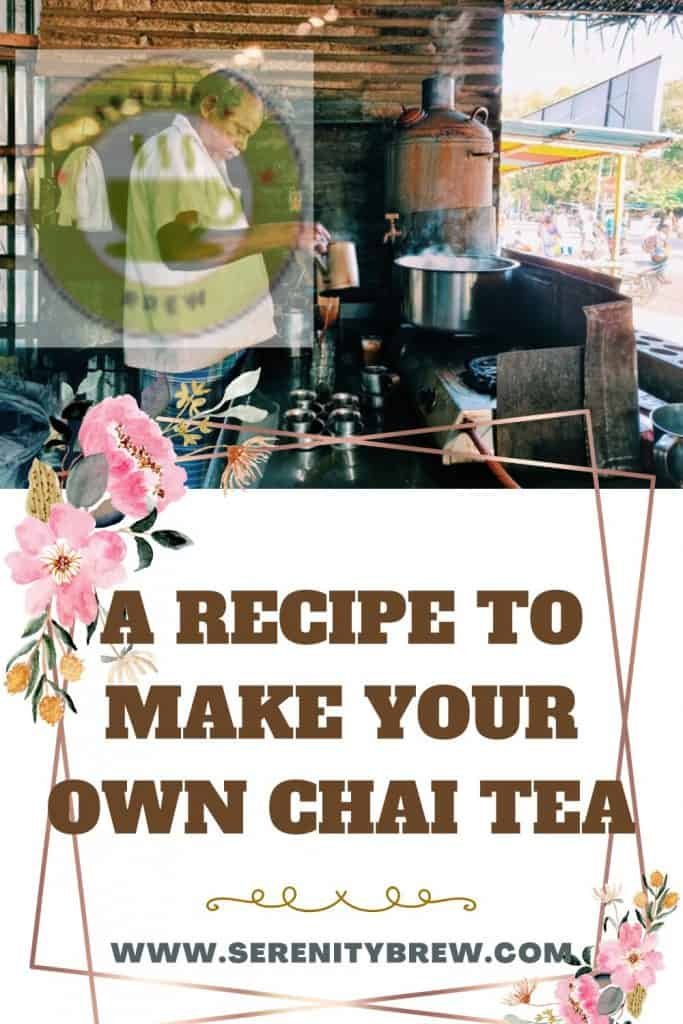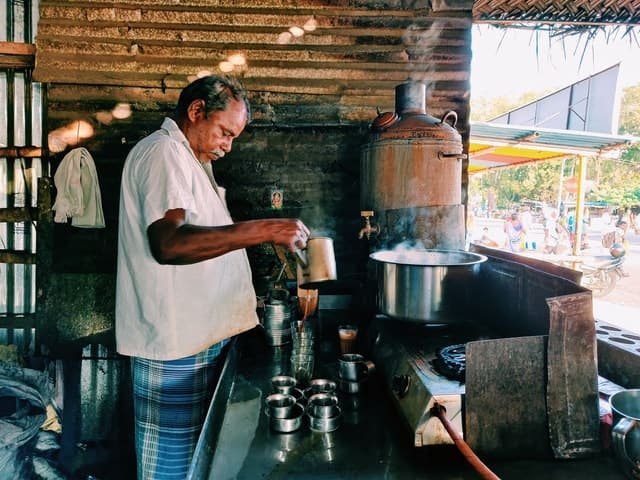
In recent times, it is common to hear the name chai tea to refer to the mixture of black tea, spices and milk. The word chai simply means tea, so saying “tea tea” is redundant to say the least.
It seems that the origin of the misunderstanding is from the Americans, who have shortened the Masala Chai concept to simply chai, it has become popular and, well, the rest is history.
Masala Chai is one of the most common ways in which tea is drunk in India: spiced, very sweet and with a lot of milk. Although you can find preparations to make this drink in your supermarket, making it yourself is simple, fast and, why not say it, much more satisfying.
Elaboration
It is important to say that you will find countless variations of this recipe. Masala Chai is a tremendously widespread drink in India, each chai wallah (the famous tea stalls) has its own recipe, moreover, each Indian family makes this tea to their liking.
The Masala Chai, yes, has several factors in common. It is a tremendously comforting drink ideal for cold days or to clear quickly in the morning. Due to the milk and the often abundant sugar it is a nutritious drink. In India, it is a typical breakfast or snack.
Usually, intense black teas are used for its preparation, which are not overpowered by spices, for example Assam.
Ingredients
Masala Chai usually incorporates cardamom, cinnamon, ginger, cloves, pepper, fennel and star anise. Here are some guidelines for your own recipe, but feel free to add, remove, or modify items. The Masala Chai is a welcome mix, which you can easily adapt to your taste.
liquids
Two parts of water for each part of milk is usually suggested. Let’s do the math with:
- 350 ml of water
- 100 ml of milk
spices
- 4 black peppercorns
- 10 green cardamom pods, lightly crushed
- A pinch of green fennel seeds
- a stick of cinnamon
- 1 teaspoon fresh ginger, peeled and sliced
- 1 black tea bag
- sugar to taste
- Salt, to taste (optional).
Tea
Any strong black tea will do, you can use Assam, Darjeeling, or Ceylon tea. You don’t need to use a high-quality tea, as it will be difficult to pick out many nuances in the sea of aromas from the spices.
- Assam black tea. A generous tablespoon.
Preparation
- Grind the cardamom, cinnamon, peppercorns, and fennel seeds in a mortar. Do not grind them too much, it is not necessary to turn them into powder, a rough mixture will suffice to properly transmit the flavors.
- Put a pot on the fire with the water and milk. Add the previous mixture of spices and ginger. Bring it all to the boil.
- Reduce the heat to a minimum and let the mixture cook for at least 15 minutes. You can extend the cooking time to get more intense flavors.
- Add a tablespoon of black tea without turning off the heat. Let infuse about 3 minutes until the mixture takes on the tones of tea.
- Pour it through a fine mesh strainer into a mug. Add sugar to taste (Indians take it generously sweetened and with a pinch of salt).
A little history

If you are already having that cup of tea, you may be interested in knowing a little more about how this peculiar recipe came about.
Tea in India was appreciated for its medicinal rather than culinary value. In the 1830s, the British became concerned about China’s monopoly on tea at the time. Tea was widely consumed in the British Isles and the empire thought it appropriate to expand its supply routes.
The British, through the British East India Company, began to cultivate tea in West India, where the Assamica variant of the tea bush was already growing. In just 70 years the tea consumed in Great Britain went from 90% coming from China to just 10%.
However, tea consumption by Indians remained low until the (British-owned) Indian Tea Association launched campaigns in the early 20th century to promote its consumption.
Through these, factories, mines and textile workshops were encouraged to provide their workers with breaks in which they were provided with tea as a drink. Chai wallahs, street tea stalls, were also promoted along the entire railway system.
Initially, the promotion of tea was done in the English way: tea with a little sugar and milk, which was not successful in Indian palates.
However, variations arose spontaneously by the natives who adapted this drink to the local palate. With spices, large amounts of sugar and a very high proportion of milk, Masala Chai became a tremendously popular drink in India.
